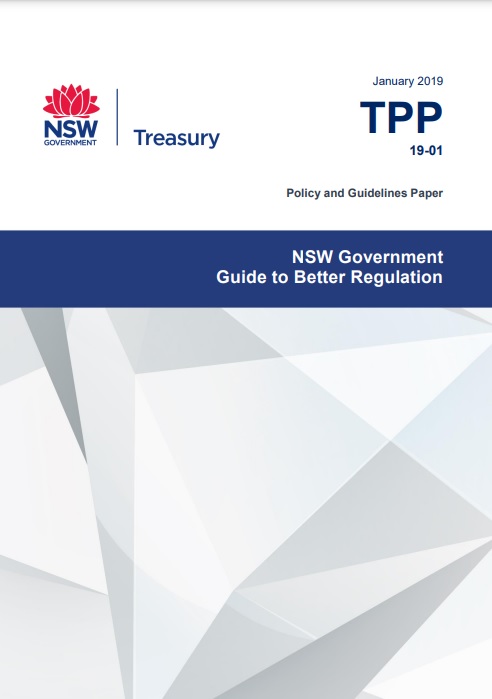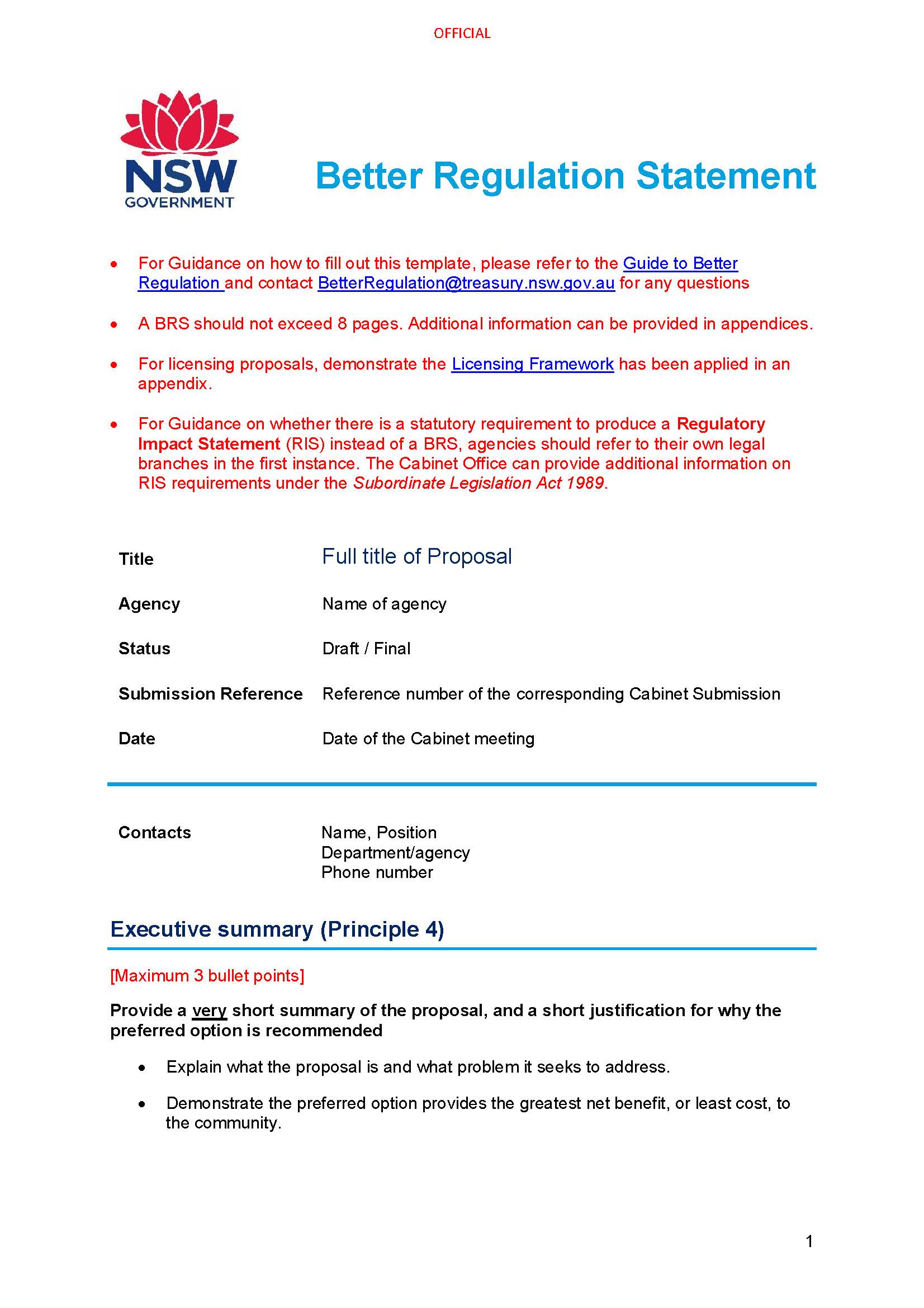Regulation shapes the lives of everyday Australian businesses and citizens. Good regulation protects consumers and communities. Regulation is also essential to enabling fair and effective competition.
Fit-for-purpose regulation protects consumers and communities while boosting productivity and living standards by promoting competition, innovation, and investment.
While regulation can be beneficial, it is not without costs. The NSW Government is committed to continuously improving its regulatory policy framework to enable evidence-based policy development and effective regulations.
In 2018, the NSW Government tasked NSW Treasury with responsibility for administering the state’s regulatory framework, emphasising the need for oversight and coordination of regulatory policy across government.
NSW agencies and regulators can contact the Competition and Regulatory Policy team in NSW Treasury for advice and support on:
- designing regulation to address a need/policy objective
- doing regulatory impact analysis
- developing regulatory proposals for government
- running regulatory experiments.
NSW regulatory framework
Regulatory proposals in NSW must demonstrate that they satisfy the Better Regulation Principles (see Treasury Circular TC19-02). These requirements exist so that decision-makers have the necessary information to make informed choices, and the analysis of impacts can contribute to the design of regulation. The principles are outlined in the NSW Guide to Better Regulation.
The term ‘regulatory proposal’ is used in the broadest possible sense to cover any policy proposals with an option to implement, remove, or transfer any rule that has an expectation of compliance, either statutory or non-statutory.
NSW Guide to Better Regulation (the Guide)
The Guide outlines the expectations for proposing new or amended regulations and provides resources to assist with the design process through to a government decision. It includes:
- the Better Regulation Principles, which articulate what a good proposal looks like
- guidance on preparing Better Regulation Statements, including examples and processes for agencies to follow.
The Guide to Better Regulation is an important pillar of the NSW Government Investment Framework, alongside the Business Case Guidelines and Evaluation Guidelines.
If a policy proposal also has regulatory impacts, this analysis can be incorporated into the business case rather than producing a separate document to comply with the Guide.
The NSW Government Guide to Cost-Benefit Analysis sets out principles and mandatory requirements when undertaking cost-benefit analysis for policies, projects, programs, and regulations. See the Centre for Economic Evidence web page for further resources and tools including:
- the rapid cost-benefit analysis tool
- sector-specific cost-benefit analysis frameworks.
A review of the NSW Guide to Better Regulation is currently underway to ensure it effectively supports and improves the quality of regulation in NSW. NSW Treasury undertakes to review its policies every five years.
Regulatory impact assessments
A regulatory impact assessment is a document that supports decision-makers when considering whether and how to regulate to achieve public policy goals. Similar to business cases for new policy proposals with Budget impacts, regulatory impact assessments accompany policy proposals with regulatory impacts.
| Regulatory impact assessment | Required | Must comply with |
|---|---|---|
| Regulatory impact statement (RIS) | Before a principal statutory rule is made. | |
| Better Regulation Statement (BRS) | For all significant new and amending regulatory proposals, for example:
|
For non-significant regulatory proposals:
- Where a proposal is submitted to Cabinet for approval, evidence of compliance with the Better Regulation principles must be provided in the Cabinet Submission.
- Where a regulation, or other Statutory Instrument, is submitted to the Executive Council for approval, evidence of compliance with the Better Regulation principles must be provided with the Executive Council Submission. This may be in the form of:
- analysis prepared in accordance with Schedule 1 of the SLA 1989, or
- a RIS prepared in accordance with Schedule 2 of the SLA 1989, or
- a formal BRS.
See the regulatory impact assessment repository for published BRS and RIS across all NSW Government agencies.
Regulatory experimentation toolkit
Regulators can enhance the quality of regulation by testing the performance of a new regulatory scheme or process against existing or possible alternatives.
Regulatory experiments generate evidence to drive better regulation by helping agencies:
- respond to changing risks
- deal with technological change and support innovation
- find more cost-efficient ways of regulating
- build the evidence to overcome resistance to change.
The regulatory experimentation toolkit is a set of helpful guides and resources to equip agencies with the knowledge and skills to improve regulatory policy in NSW.
The NSW Productivity and Equality Commission, in partnership with the NSW Behavioural Insights Unit (BIU), supports regulatory experimentation in NSW. Contact us for further advice and support.
| Research | Case studies | Guides and tools | ||





